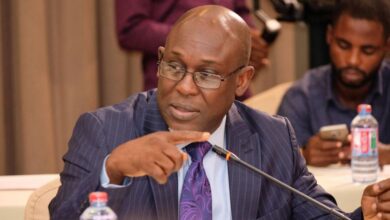To Accuse The President of Orchestrating CJ Removal is Both Misinformed and Misguided- Oliver Barker

There has been significant public debate regarding President John Dramani Mahama’s adherence to constitutional procedures in handling petitions for the removal of the Chief Justice. Some critics claim it is an orchestrated attempt to remove the Chief Justice, while others argue that the President is simply following due process.
Legal expert and activist Oliver Barker-Vormawor has clarified the procedure, emphasizing that the President has acted within the framework of the 1992 Constitution.
Judicial Independence and Accountability
The Constitution of Ghana provides strong safeguards to ensure judicial independence. However, it also recognizes the need for accountability within the judiciary.
A Superior Court Judge (including the Chief Justice) can only be removed under three conditions:
- Misbehavior (including corruption or abuse of office)
- Incompetence
- Inability to perform duties due to ill health (including mental illness)

The Removal Process: A Step-by-Step Breakdown
1. Petitions Against Other Judges (Excluding the Chief Justice)
- If a complaint is made against a Superior Court Judge, the President forwards it to the Chief Justice.
- The Chief Justice then conducts a prima facie review to determine whether the petition is frivolous or has merit.
- If there is merit, a special committee is set up to investigate the matter further.
2. Petitions Against the Chief Justice
The process is different when the Chief Justice is the subject of a complaint.
- Step 1: The President receives the petition.
- Step 2: The President must consult the Council of State to determine whether the petition has merit (a prima facie case).
- Step 3: If the Council of State advises that the petition is serious, the President establishes a committee to investigate the allegations.
This investigative committee is made up of:
- Two Supreme Court Justices
- Three non-lawyers (appointed by the Council of State)
This ensures an independent review process, free from Presidential interference.

Key Takeaways
- The President does not have the power to unilaterally remove the Chief Justice.
- The Council of State plays a critical role in determining if the petition has merit.
- The investigative committee operates independently, and its findings are binding.
- The President’s consultation with the Council of State is a constitutional obligation, not an attempt to orchestrate the Chief Justice’s removal.
- If the petition is deemed serious, the Council of State may advise the suspension of the Chief Justice during the investigation.
Conclusion
Accusations that the President is orchestrating the Chief Justice’s removal misrepresent the constitutional process. The Constitution deliberately designed this framework to balance judicial accountability with judicial independence.
Therefore, following the constitutional process should not be interpreted as political maneuvering, but rather as adherence to the rule of law.




